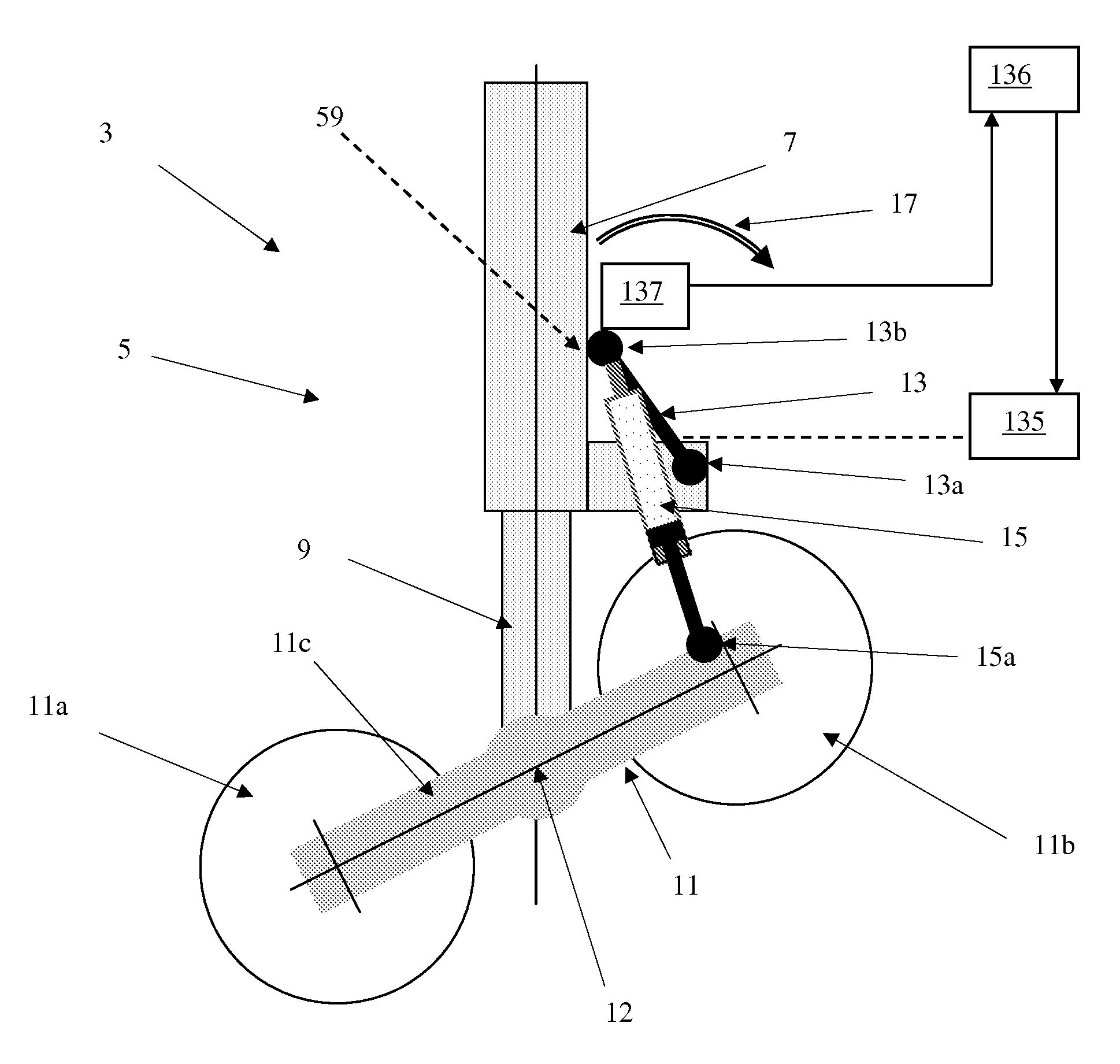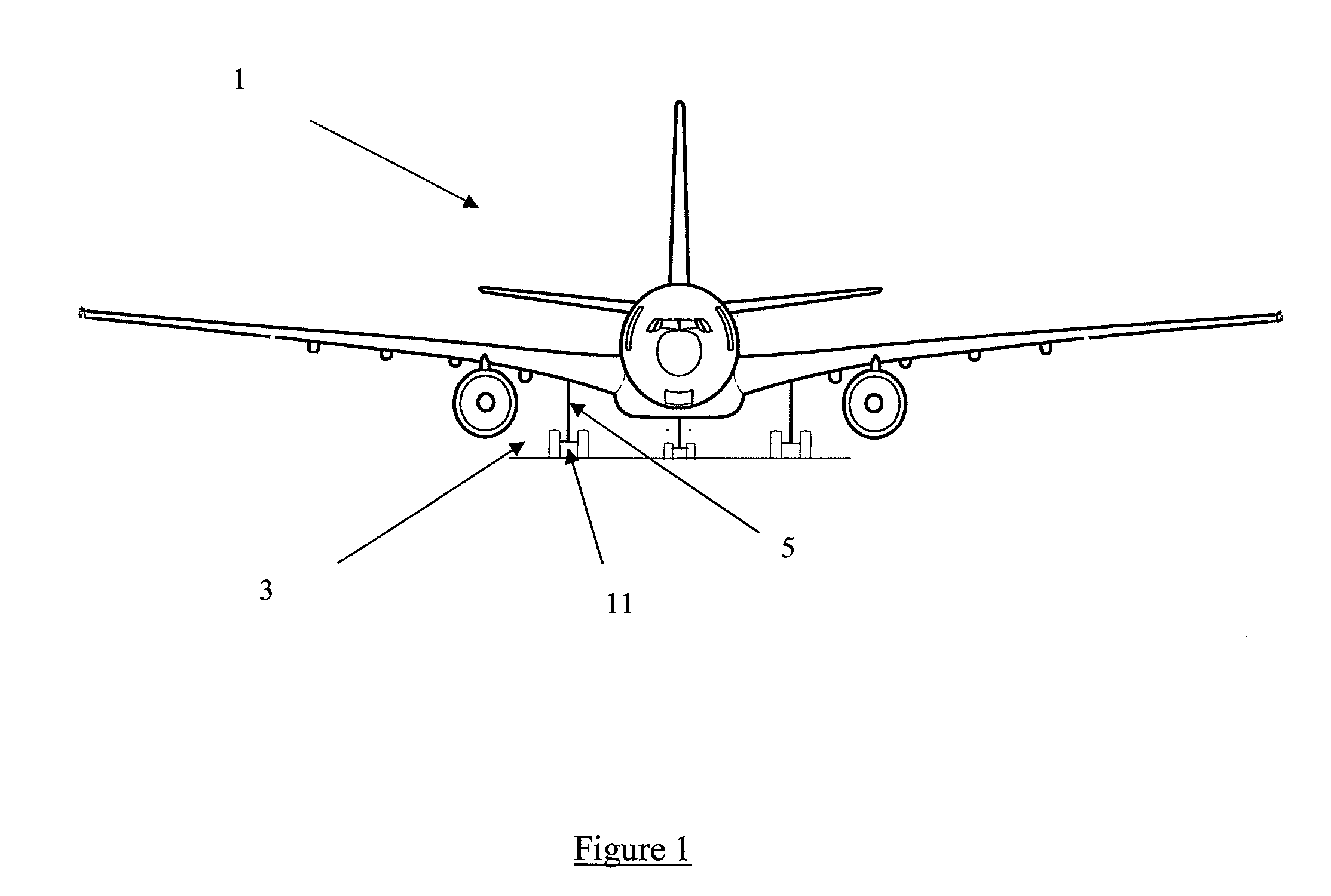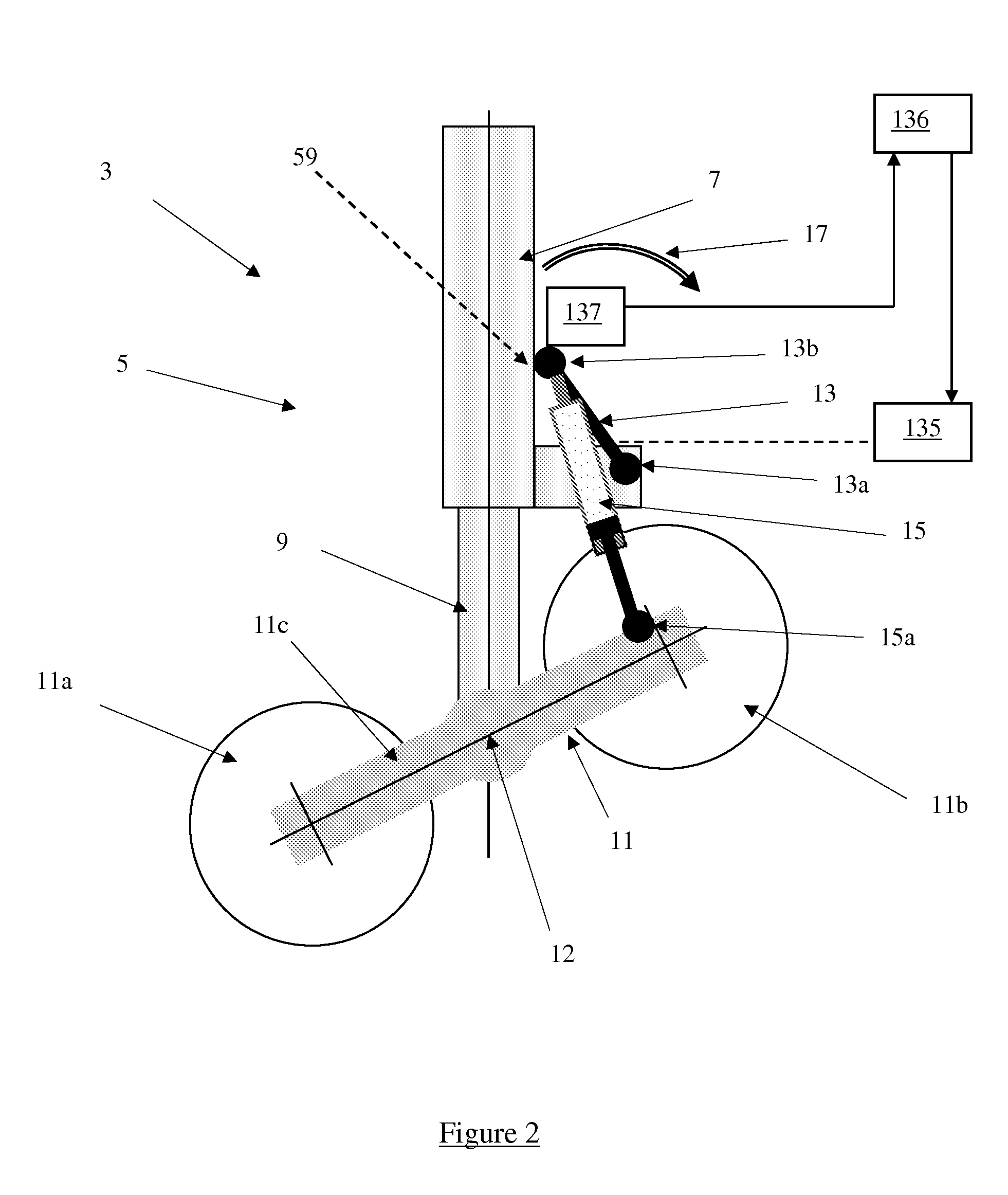Landing gear
a landing gear and gear technology, applied in the field of aircraft, can solve the problems of significant load on landing gear components such as landing gear, and the aircraft landing gear is subject to considerable loads, and achieve the effect of improving the trimming and positioning arrangement of the bogi
- Summary
- Abstract
- Description
- Claims
- Application Information
AI Technical Summary
Benefits of technology
Problems solved by technology
Method used
Image
Examples
first embodiment
[0031]FIG. 3 shows the arm 13 is in a second position and the bogie 11 in a stowable position. In the invention, the stowable position is such that the bogie 11 is perpendicular to the leg 5. The bogie 11 is positioned in the stowable position shortly before the landing gear 3 is retracted into the aircraft 1. Movement of the bogie 11 between the trimmed deployed position and the stowable position will now be described with reference to both FIGS. 2 and 3.
[0032]With the landing gear in the position shown in FIG. 2, a control unit (schematically shown at 136 in FIG. 2) sends a signal to a rotary positioning actuator (schematically shown at 135 in FIG. 2) which in turn causes rotation of the arm 13 in a direction shown by the arrow 17 in FIG. 2. The rotary actuator 135 is located in a bearing on the leg, and is in the form of an electro-mechanical worm-gear arrangement. The rotary actuator 135 has a duplicated gearbox and motor as a safety precaution and has a failure rate in the orde...
second embodiment
[0037]According to the invention (not shown) the rotary actuator is provided with a fail-safe device. When the actuator is subjected to excessive torsion and the bogie is in the stowable position, a fusible structural element in the device is arranged to shear, allowing the arm to rotate away from the second position. If, for example, the aircraft is forced to land with the bogie in the stowable position, the arm will therefore rotate to allow the bogie to freely achieve a stable alignment and a significant portion of the loads generated during landing may be reacted through the arm 13 and link 15 and the bearing at 13a.
[0038]The invention is of greater application to larger aircraft. The aircraft is preferably of a size equivalent to an aircraft designed to carry more than 50 passengers, and more preferably more than 100 passengers.
PUM
 Login to View More
Login to View More Abstract
Description
Claims
Application Information
 Login to View More
Login to View More - R&D
- Intellectual Property
- Life Sciences
- Materials
- Tech Scout
- Unparalleled Data Quality
- Higher Quality Content
- 60% Fewer Hallucinations
Browse by: Latest US Patents, China's latest patents, Technical Efficacy Thesaurus, Application Domain, Technology Topic, Popular Technical Reports.
© 2025 PatSnap. All rights reserved.Legal|Privacy policy|Modern Slavery Act Transparency Statement|Sitemap|About US| Contact US: help@patsnap.com



